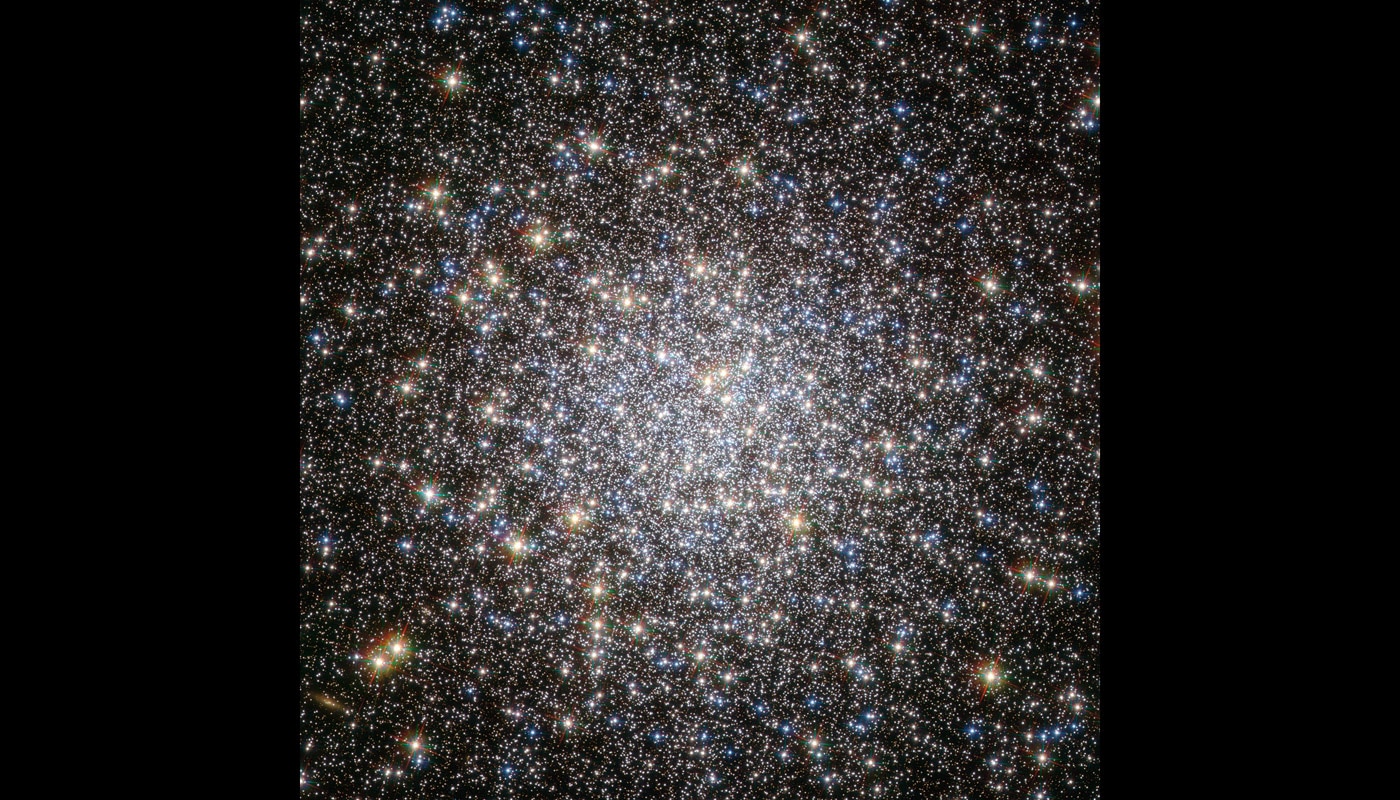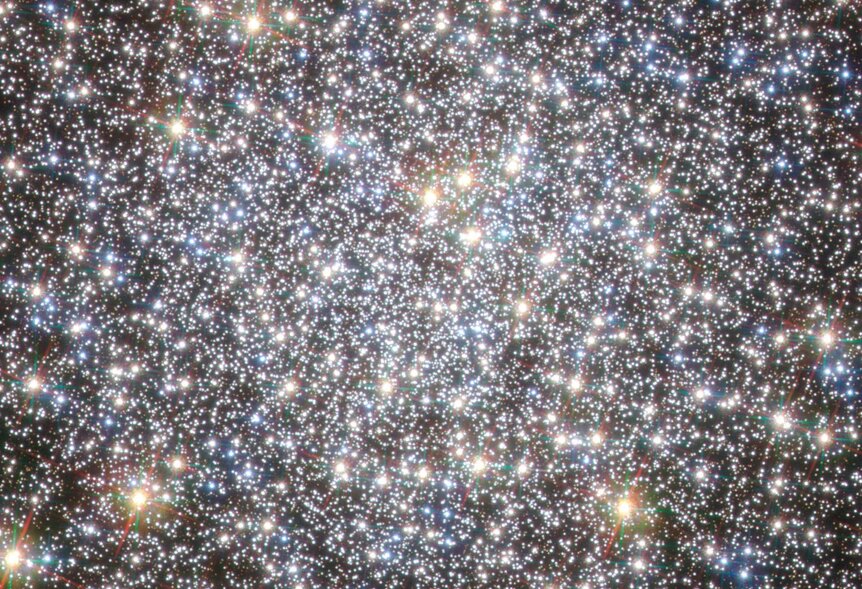Create a free profile to get unlimited access to exclusive videos, sweepstakes, and more!
The complex diversity of the gorgeous globular cluster M5
Globulars are far less simple than we used to think.

One of my favorite things about astronomy as a field of science is how, after enough evidence piles up about a topic, we can change our minds about it.
Globular clusters are a perfect example of this. Globulars are star clusters, containing hundreds of thousands or, for the biggest ones, even millions of stars all packed into a roughly spherical volume ranging from a couple of dozen to a couple of hundred light years across.
They're absolutely beautiful through the eyepiece, and when I was a kid (and still to this day) they were one of my favorite objects to gaze at through the eyepiece. The core of a globular is so tightly packed that the stars blend into a single fuzzy blob, and as the stellar density decreases farther out individual stars can be seen.
I read about them when I was younger and the thinking then was that globulars are very old, and all the stars formed at the same time. That makes them great laboratories for studying stars: They're all the same age and at the same distance from us, taking away two complicating factors when trying to understand how stars behave.
Here's the fun bit: That's wrong. As astronomers got better at studying stars they began to find ones in globulars that didn't look as old as the others. In some globulars it appeared there were two populations of stars, one clearly older than the other, sometimes by more than a billion years. Obviously, globulars are more complicated than we thought.
And now a new paper has come out that shows that in the case of M5 it's even more complicated than that: it seems to have at least three populations of stars.
M5 is a gorgeous globular that's one of the galaxy's oldest, and is about 30,000 light years from us. The Hubble image displayed here shows roughly 100,000 stars in it, and you're only seeing its inner region! It has a lot of stars.
Previous analysis of the stars shows that there are two populations of stars in it. One is fairly normal, but the other group of stars seems to have more nitrogen and less carbon in them than you'd expect.
This is a tough observation to make. We can measure the abundances of atoms and molecules in stars by taking spectra, breaking their light up into thousands of individual wavelengths (think of that as colors). Different atoms and molecules absorb different colors of light, so when you look at the spectrum some colors are diminished or missing, and we use those absorption features to measure the chemical abundances.
This is pretty hard to do in a cluster because the stars are so crowded together. Can you be sure you're measuring a single star when another one may be close to it?
In the new work the astronomer did something clever: They used filters instead of spectra, and these filters let though very specific colors of light (we call these narrow band filters). This allowed them to pick out individual stars more easily but still measure the amount of absorption by key molecules. Looking at red giant stars — ones like the Sun but near the ends of their lives, when they've swollen up and cooled off — they found that the second population of stars that had more nitrogen and less carbon in them was itself divided into two groups: One that was concentrated in the core of the cluster, and another that was more evenly distributed throughout. Moreover, the ones that were distributed more evenly had even more nitrogen and less carbon than the ones that were centrally concentrated.
What's the difference? It may be that the cluster had two waves of star formation in it. The first was 12 billion years ago, when it first formed. Remember, stars are packed together tightly in globulars, and they pass each other quite often. They interact gravitationally, and what winds up happening is that more massive stars sink to the center while lower mass ones rise to the outskirts — we call this mass segregation, and it's similar to how heavy things sink and lighter weight things rise in water or air.
Those massive stars explode as supernovae, creating heavier elements and blasting them out into the cluster. Due to the way massive stars make elements during their lives, this gas can have more nitrogen and less carbon in it.
When the second generation of stars was born from leftover gas in the cluster, they had more of this gas in them, so they were enhanced in nitrogen and depleted in carbon. Stars that formed in the core, where this gas was abundant, really got extra nitrogen and less carbon. Stars forming farther out formed somewhat later, and didn't get as much of that gas. While they are still overly nitrogenated and less carbonated (so to speak) than the first generation of stars, it's not to the same levels as the stars in the core.
That makes three populations: An old one, a middle one that's more nitrogen enhanced and carbon depleted, and a third that's in between in abundances.
If this sounds complicated, then yes, it is, and that's my point. Globulars are not the simple laboratories for stellar studies that astronomers assumed they were decades ago. Our view on them, based on years of evidence, has changed dramatically.
They're complex, diverse individuals, creating a wonderful spectrum of objects worthy of study in and of themselves. That makes understanding them more of an effort, of course, but it's worth it, and once you start to grasp the intricacies, their beauty and fascination stands out even more.
Tip o' the spectroscopic grating to AAS Nova, which has a more technical synopsis of this work.
















